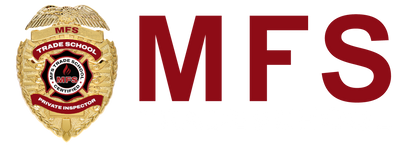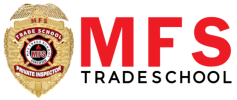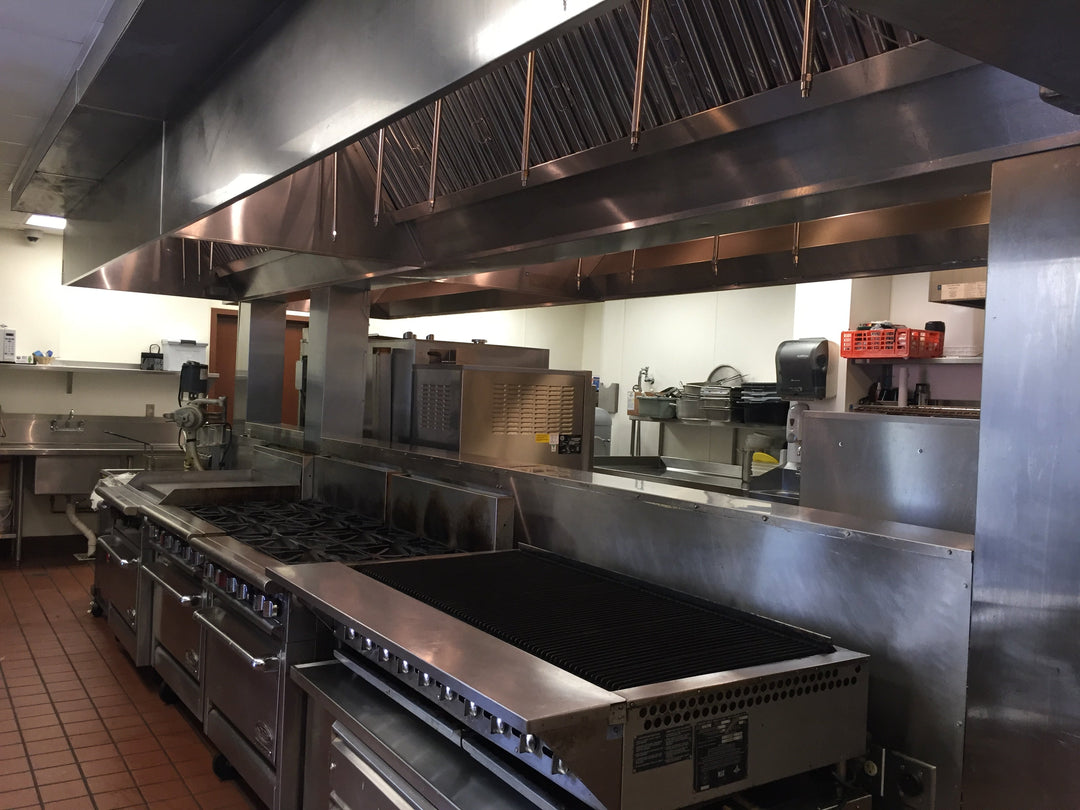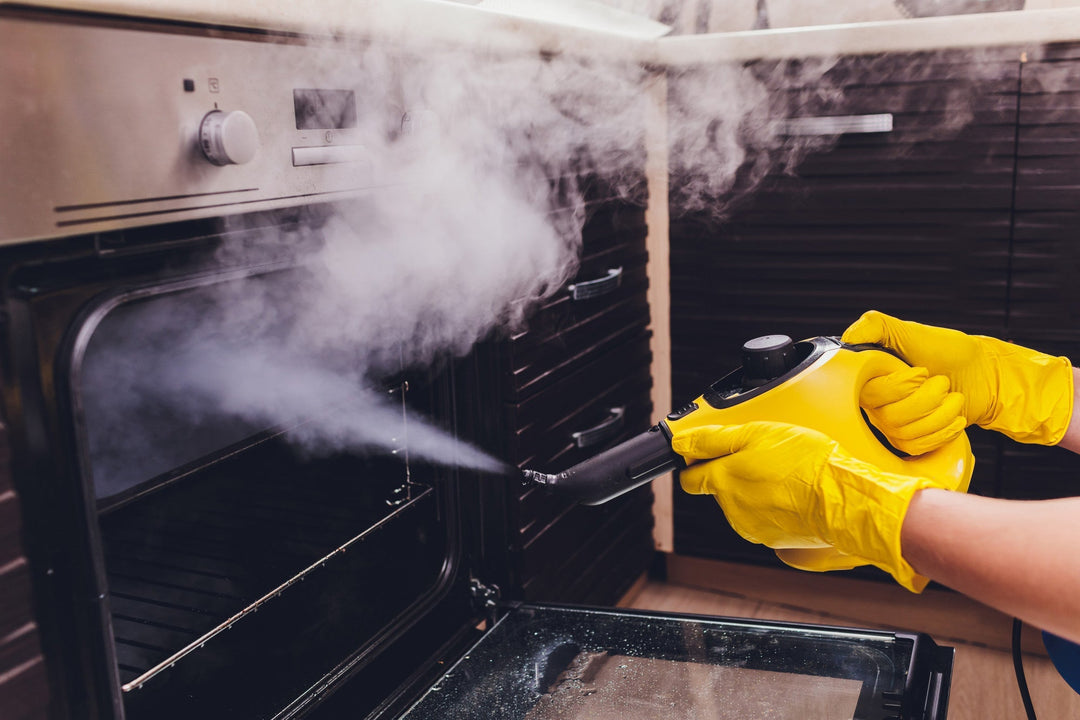Understanding Grease Ducts: The Ultimate Guide for 2025
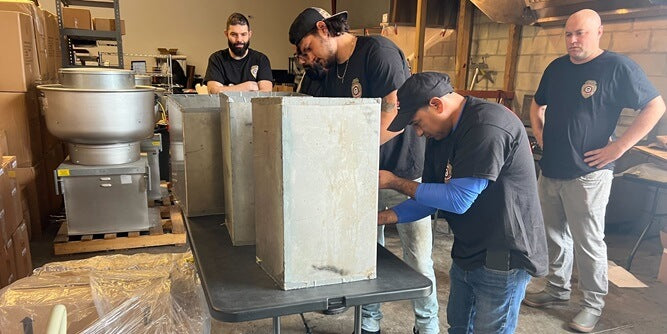
Grease ducts are important systems in commercial kitchens that help with ventilation and fire prevention. They work by capturing and removing grease, smoke, and heat produced during cooking.
The design of grease ducts is a result of careful engineering:
- Liquid-tight construction prevents dangerous grease leaks
- Strategic access panels allow for thorough maintenance
- Specialized hood systems effectively capture cooking emissions
- Integrated make-up air systems ensure proper airflow
Fire codes are crucial for ensuring the safety of grease ducts. The National Fire Protection Association (NFPA) 96 standards outline specific requirements for installing, maintaining, and cleaning these systems. These regulations are in place to address the fire risk posed by grease buildup inside ducts, which can ignite from cooking flames or sparks.
Regular cleaning practices are essential for preventing potential disasters. Maintenance goes beyond just following regulations - it also involves:
- Stopping dangerous grease accumulation
- Keeping indoor air clean
- Protecting expensive kitchen equipment
- Meeting food safety standards
- Prolonging the lifespan of the system
As commercial kitchens continue to evolve in 2025, it's increasingly important for restaurant owners, facility managers, and cleaning professionals to understand these key aspects of grease duct systems.
In this context, the adoption of advanced virus disinfection methods is becoming increasingly important. With the rise of foodborne illnesses and viral outbreaks, implementing effective cleaning protocols not only protects customers but also ensures the overall safety of the kitchen environment.
Moreover, utilizing advanced cleaning equipment such as the MFS Electrostatic Misting Fogger, which is battery-operated with a heavy-duty blower capable of reaching up to 8 feet away, can significantly enhance the efficiency of these cleaning protocols. This fogger can mist a 14' x 20' room in seconds, making it an invaluable tool for maintaining hygiene standards in commercial kitchens.
Furthermore, as the landscape of commercial kitchens continues to evolve, it's crucial to stay updated with the latest trends and techniques. Trade schools are playing a pivotal role in bridging America's skills gap by providing training programs and hands-on experiences that empower individuals to excel in their respective fields.
Architecture of Grease Ducts
The structural design of grease ducts plays a vital role in commercial kitchen safety. A properly constructed grease duct system incorporates several key components that work together to ensure efficient operation and minimize fire risks.
Liquid-Tight Construction
Modern grease ducts feature liquid-tight construction, preventing potentially hazardous grease leakage. The welded seams and joints create an impenetrable barrier that:
- Contains grease within the duct system
- Prevents contamination of surrounding areas
- Reduces fire hazards from grease accumulation
- Simplifies the cleaning process for professional cleaning services
Prefabricated Design Benefits
Prefabricated grease ducts offer superior protection against grease leakage compared to traditional field-welded systems. These factory-built components provide:
- Consistent quality control
- Precise fitting connections
- Enhanced durability
- Reduced installation time
- Lower maintenance requirements
Access Panel Configuration
Large access panels are strategically placed throughout the duct system, enabling thorough cleaning and inspection. These panels must meet specific requirements:
- Minimum size of 24x24 inches for proper access
- Located at maximum intervals of 12 feet
- Positioned at each change in duct direction
- Equipped with tight-fitting, grease-resistant gaskets
Hood Types and Applications
Different cooking operations require specific hood designs to effectively capture cooking effluent:
Type I Hoods
Used for grease-producing equipment
Features grease filters or extractors
Requires fire suppression systems
Type II Hoods
Designed for non-grease applications
Handles steam and heat removal
Used with ovens and dishwashers
Make-Up Air Systems
A balanced make-up air system ensures optimal grease duct performance:
- Replaces exhausted air volume
- Maintains proper air pressure
- Prevents backdrafting
- Ensures efficient hood capture
- Supports HVAC system operation
The make-up air system must be carefully calculated based on:
- Kitchen size
- Equipment load
- Exhaust volume
- Building requirements
- Local climate conditions
Professional cleaning services must understand these architectural elements. This understanding is crucial when starting a hood cleaning business, as it requires a solid foundation in understanding entrepreneurship and the specific needs of commercial kitchens.
Moreover, mentorship can significantly accelerate your cleaning business growth by providing valuable insights from seasoned industry experts.
Lastly, it's essential to comprehend the importance of cooking oil filtration in maintaining the quality and lifespan of cooking oil, which significantly impacts a restaurant's profitability.
Fire Codes Compliance for Grease Ducts
The NFPA 96 Standards are the foundation of fire safety regulations for commercial kitchen ventilation systems. These standards outline specific requirements for:
- Minimum distance to combustible materials
- Proper welding methods for duct connections
- Required specifications for fire-resistant enclosures
- Placement and construction of access panels
- Mounting requirements for exhaust fans
Local fire codes build upon NFPA 96 standards, creating additional safety measures tailored to regional needs. You'll need to comply with both sets of regulations to maintain a safe kitchen environment.
Installation Requirements
Proper grease duct installation requires strict adherence to specific guidelines:
- Slope Requirements
- Horizontal ducts must have a minimum slope of 1/16 inch per foot
- Vertical ducts must have a fire-resistant shaft enclosure
- Support systems must be able to handle thermal expansion
- Access Points
- Access panels should be placed no more than 12 feet apart
- Panels must be liquid-tight and properly insulated
- Access points should be strategically located for effective cleaning
Maintenance Regulations
Your kitchen hood cleaning schedule depends on how much cooking you do:
Monthly Cleaning Required:
- Solid fuel cooking operations
- High-volume cooking facilities
- 24-hour cooking operations
Quarterly Cleaning Required:
- Moderate-volume cooking operations
- Standard operating hour facilities
Semi-Annual Cleaning Required:
- Low-volume cooking operations
- Seasonal businesses
For professional cleaning services, it's essential to engage certified hood cleaning teams who have undergone rigorous training such as those offered by MFS Trade School. They provide comprehensive training in Kitchen Exhaust Hood Cleaning, ensuring that your cleaning team meets the necessary certification requirements.

Professional Certification Requirements
The standards require specific qualifications for cleaning agencies:
- Certified hood cleaning teams
- Proper insurance coverage
- Documentation of cleaning procedures, including before/after photo evidence which can be efficiently managed using platforms like this custom photo gallery.
- Written inspection reports
Fire Safety Inspections
Regular inspections by qualified professionals must verify:
- Integrity of duct joints and seams
- Proper functioning of access panels
- Condition of fire-resistant enclosures
- Cleanliness levels throughout system (this is where professional kitchen exhaust hood cleaning services become critical)
- Exhaust fan operation
Record Keeping Requirements
NFPA 96 requires you to keep detailed records of:
- Cleaning dates and procedures (which should match up with your scheduled maintenance)
- Inspection findings
- Repairs performed
- Maintenance schedule adherence
- Certification documentation
Cleaning Best Practices for Grease Ducts
Regular maintenance of grease ducts is a cornerstone of kitchen safety and operational efficiency. A well-maintained duct system reduces fire hazards, improves air quality, and extends equipment lifespan.
Essential Cleaning Steps for Grease Duct Components:
1. Hood Filters
- Remove and soak in hot water with a powerful hood degreaser
- Scrub thoroughly with non-abrasive brushes
- Rinse with clean water
- Allow to dry completely before reinstallation
2. Ductwork Cleaning
- Access through panels at strategic points
- Use specialized scrapers to remove built-up grease
- Apply approved cleaning solutions
- Pressure wash interior surfaces
- Vacuum residual debris
3. Fan and Plenum Maintenance
- Disconnect power supply
- Clean blades individually
- Remove grease accumulation from housing
- Check belt tension and alignment
- Lubricate moving parts as needed
Safety Gear Requirements:
- Heat-resistant gloves
- Non-slip footwear
- Eye protection
- Respiratory masks
- Chemical-resistant clothing
- Hard hats when working at heights
Professional Cleaning Services
Professional cleaning companies certified under NFPA 96 standards bring specialized expertise and equipment to the task. These services offer:
- Advanced cleaning technologies
- Proper disposal of extracted grease
- Documentation for compliance purposes
- Before and after inspection reports
- Emergency cleaning services
Recommended Cleaning Frequency:
Heavy-Volume Cooking Operations (12-16 hours daily)
- Monthly cleaning schedule
- Weekly hood filter maintenance
- Quarterly fan and plenum inspection
Moderate-Volume Operations (6-12 hours daily)
- Quarterly system cleaning
- Bi-weekly hood filter maintenance
- Semi-annual fan inspection
Light-Volume Operations (2-6 hours daily)
- Semi-annual system cleaning
- Monthly hood filter maintenance
- Annual fan inspection
Professional Service Benefits:
Hiring professionals for these tasks can significantly reduce fire risk, extend equipment lifespan, improve ventilation efficiency, and lower overall operational costs. For instance, effective kitchen hood cleaning strategies can prevent fire hazards and promote a safe kitchen environment. Furthermore, regular kitchen exhaust cleaning not only improves health ratings but also keeps your kitchen compliant with health department standards.
Importance of Indoor Air Quality
In addition to the above practices, it's crucial to consider the impact of indoor air quality on overall health and safety in the kitchen environment. Regular cleaning of air ducts can significantly improve this aspect, as outlined in the EPA's guide on indoor air quality. This is particularly relevant when dealing with grease ducts, which can accumulate harmful substances over time.

Moreover,
Conclusion
Safe commercial kitchen operations depend on proper grease duct maintenance and strict adherence to fire codes. Your commitment to regular cleaning schedules, professional inspections, and compliance with NFPA 96 standards creates a safer working environment for your staff and customers.
Key Actions for Kitchen Fire Prevention:
- Schedule professional cleaning services at recommended intervals based on your kitchen's cooking volume. Consider partnering with certified professionals who understand local fire codes and can provide services such as exhaust hood cleaning.
- Document all maintenance activities and inspections for compliance records.
- Train staff on basic grease duct maintenance and safety protocols.
- Install appropriate safety equipment and maintain emergency response plans.
The investment in proper grease duct maintenance pays dividends through:
- Reduced fire risks
- Extended equipment lifespan
- Improved air quality
- Lower insurance premiums
- Prevention of costly compliance violations
Don't wait for inspections or incidents to prioritize your kitchen's safety. Take action now by scheduling a professional assessment of your grease duct system. Contact a certified commercial cleaning company to develop a customized maintenance plan that aligns with your kitchen's specific needs and local regulations.
Your commitment to grease duct safety protects your business, employees, and customers – make it a daily priority. For further assistance, consider reaching out to MFS Trade School for comprehensive training and certification programs in the restaurant cleaning and maintenance industry. Additionally, following some essential restaurant cleanliness tips from health inspectors could further enhance your kitchen's safety standards.
